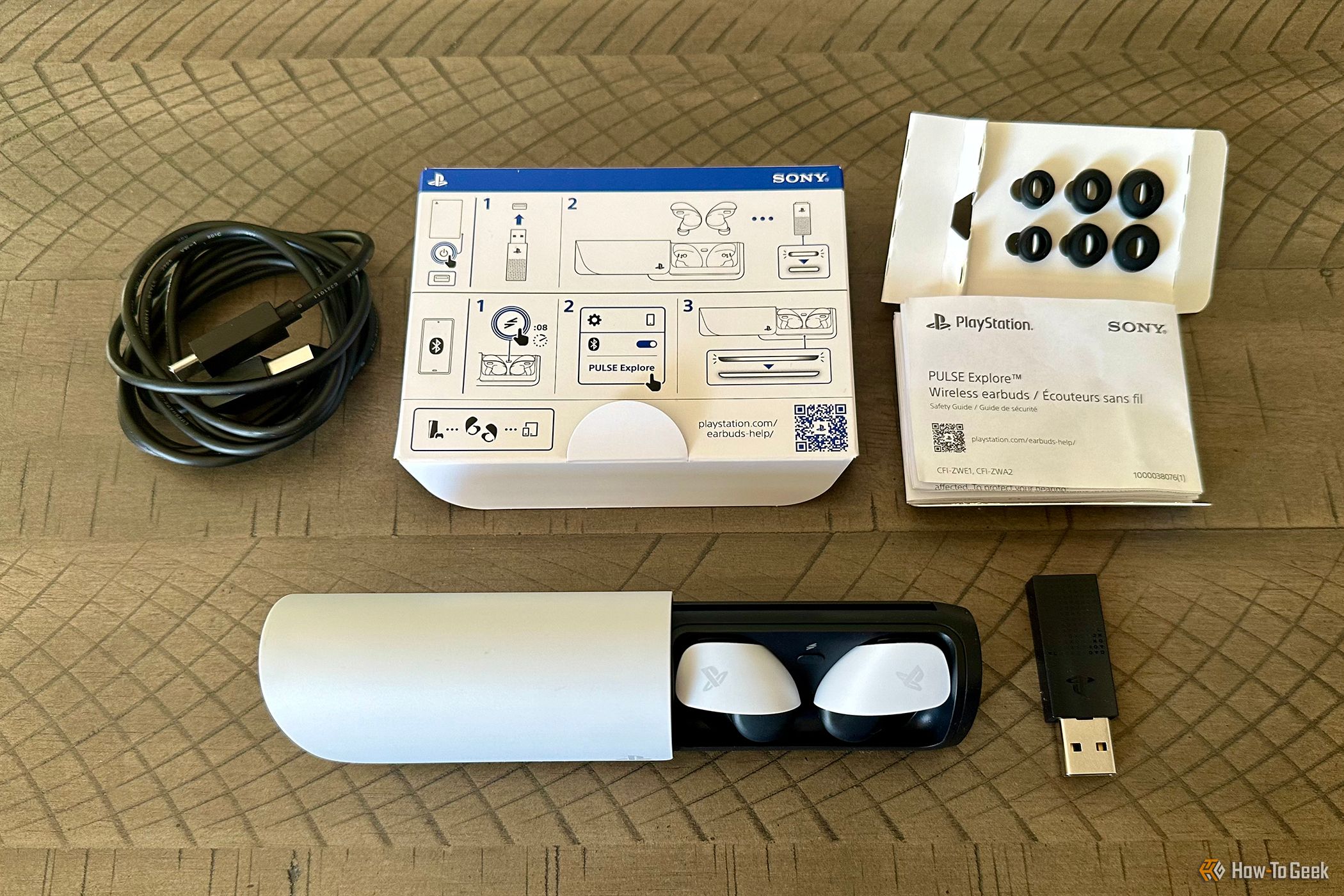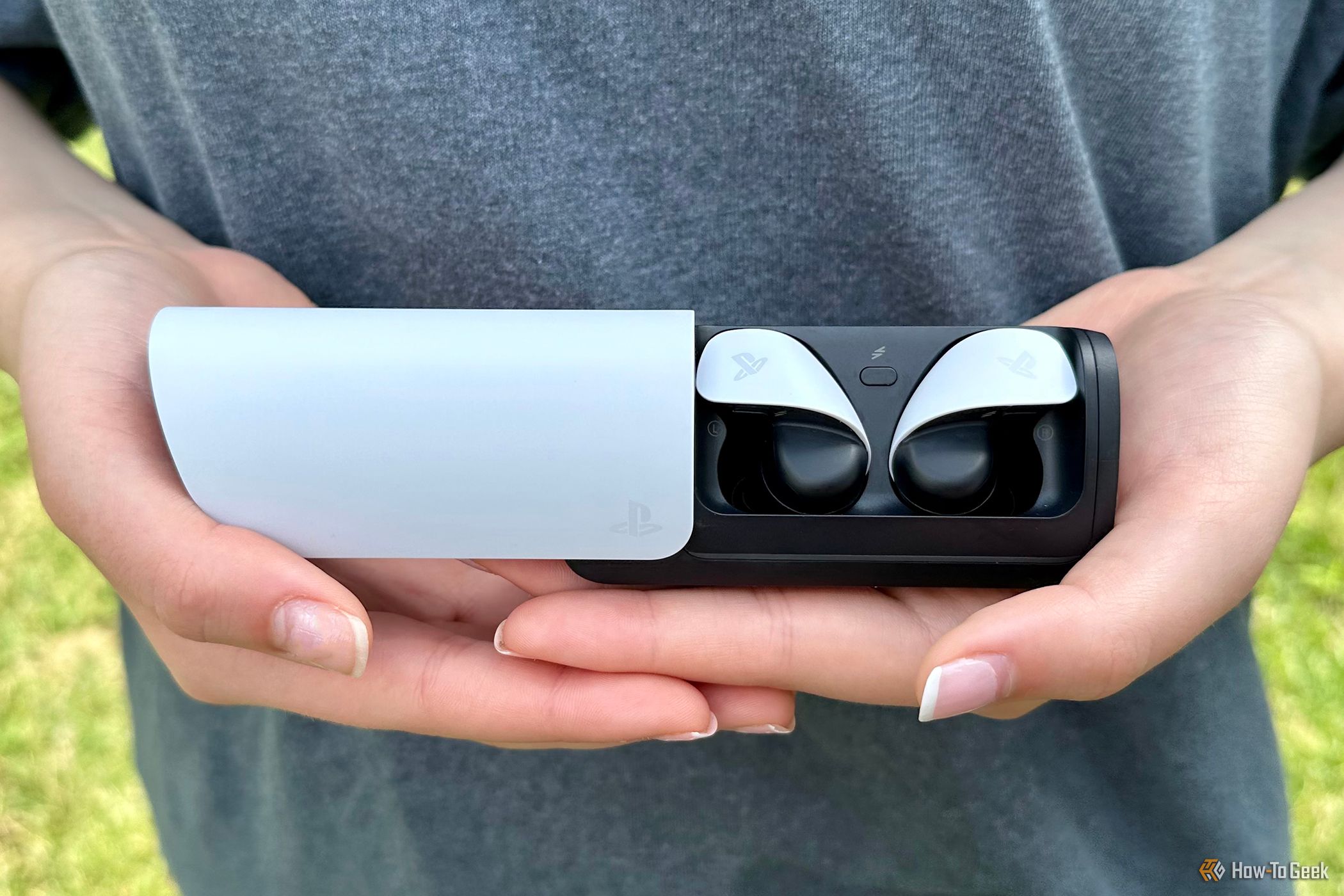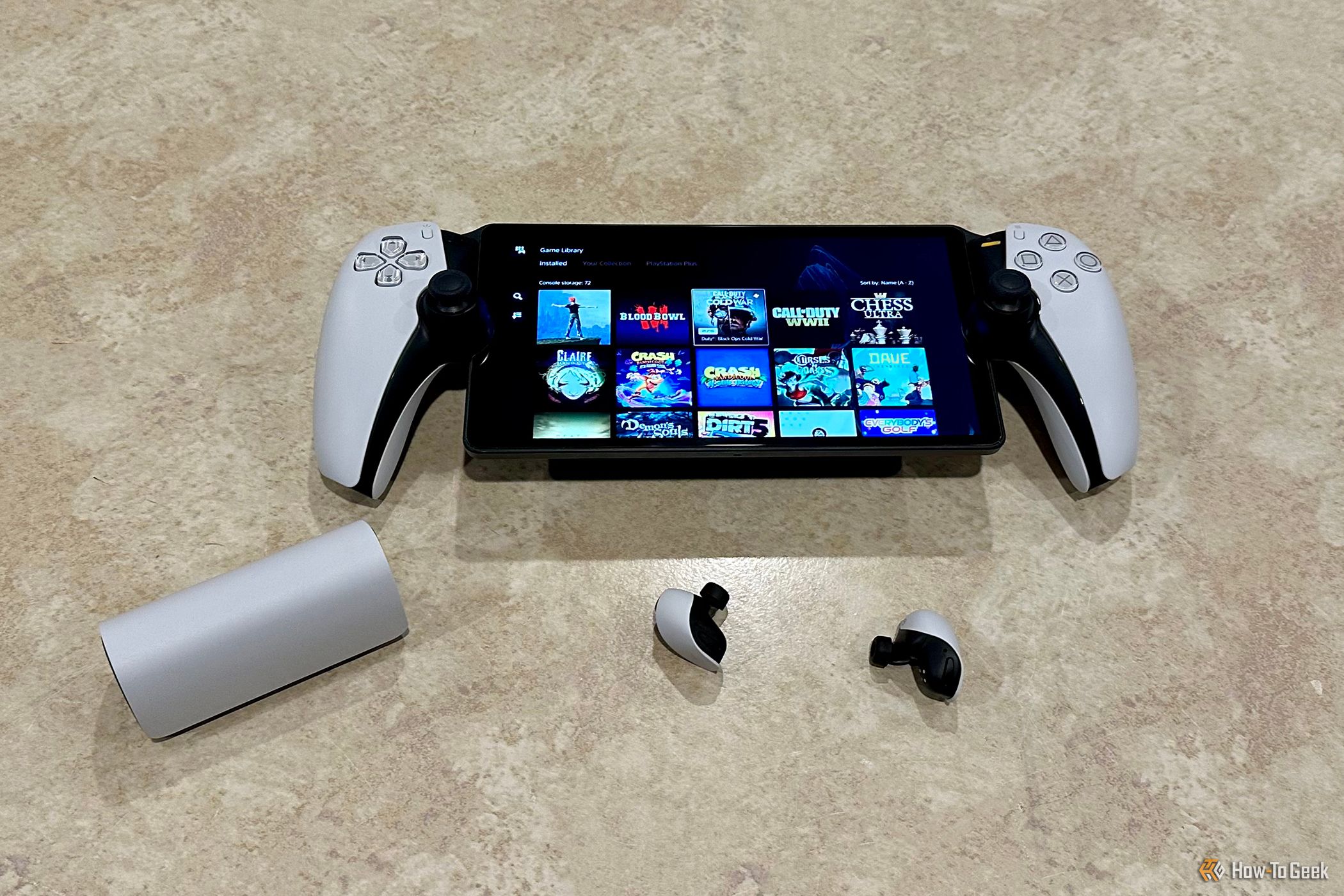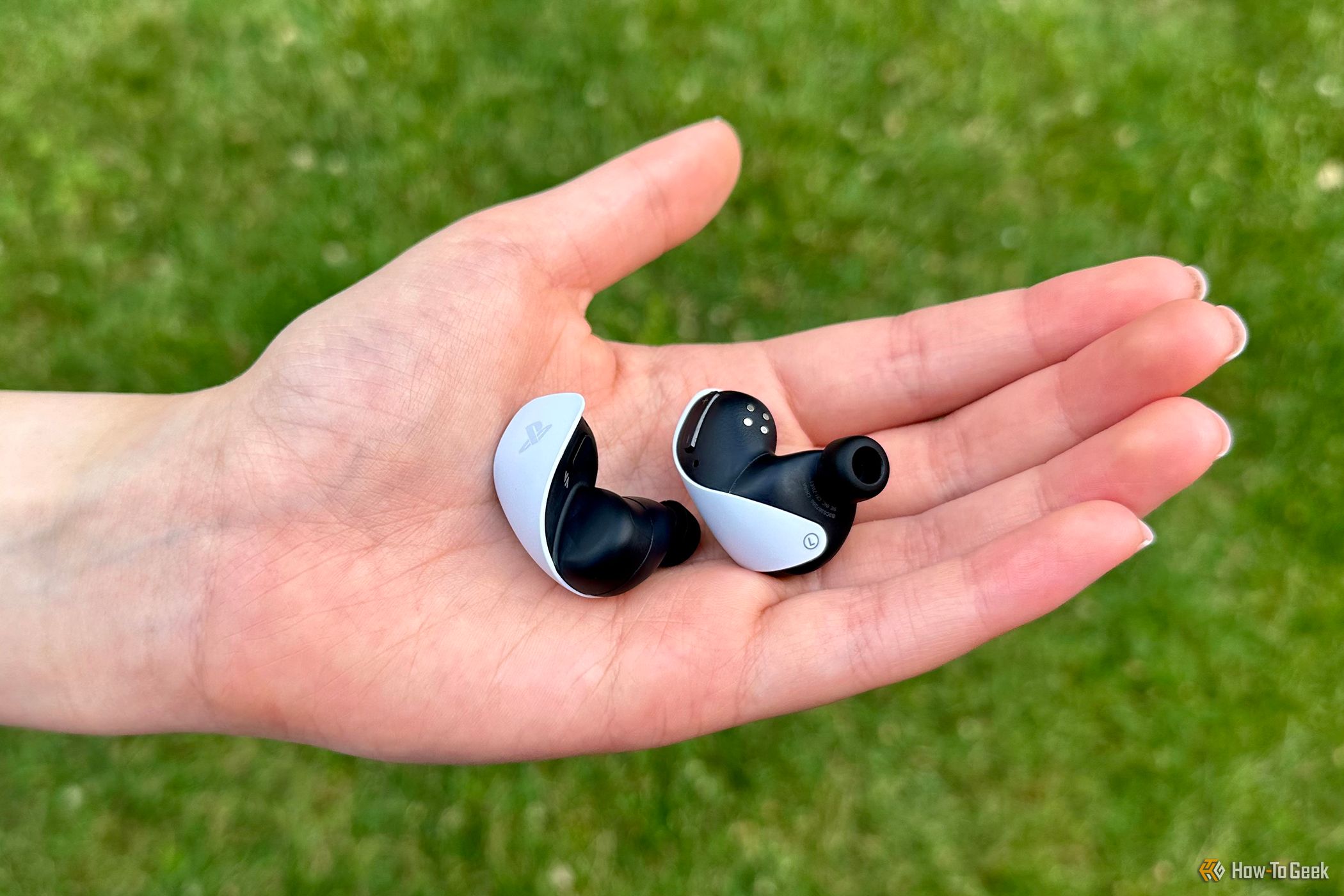Key Takeaways
- Good choice for multi-platform use with excellent sound quality on PS5 and PS Portal.
- Well-tuned surround sound performance and compatible wireless option for PS Portal owners.
- Magnetic planar drivers provide high-quality sound, but the earbuds are bulky, and lack in-ear detection and wireless charging.
The market is flooded with wireless earbuds, but few are designed with gamers in mind. Whether it’s lag, latency, or any other delay between the actions on screen and what you hear, there aren’t a lot of options for gamers who don’t want to deal with bulky over-the-ear headsets. Sony hopes to address that market gap with their Pulse Explore wireless earbuds. While these earbuds are not without their issues, they offer a real performance-centric option for discerning gamers on PlayStation 5, PlayStation Portal, or PC.
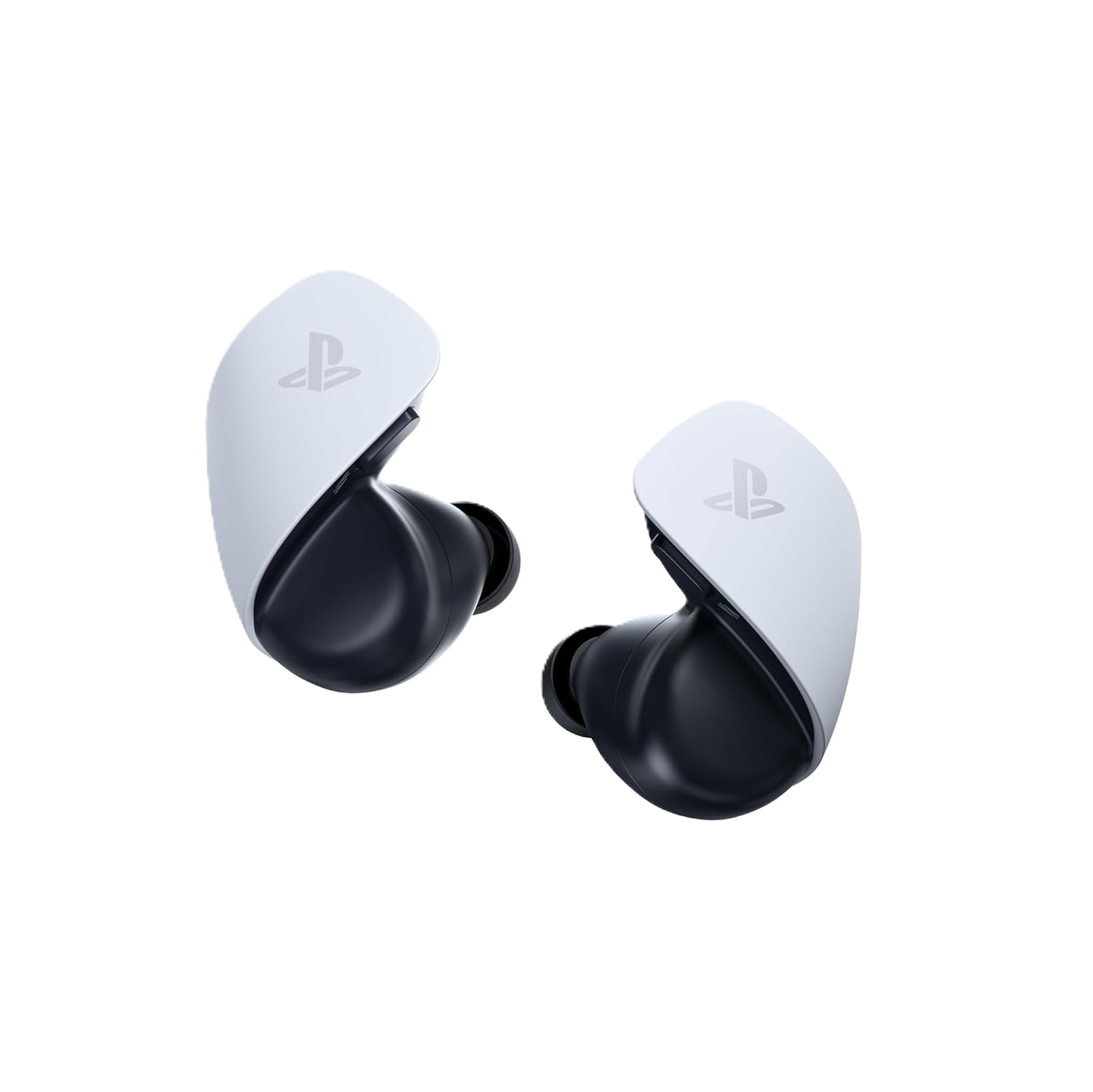
Sony Pulse Explore Wireless Earbuds
Sony Pulse Explore Wireless Earbuds feature planar magnetic drivers, lossless PlayStation Link wireless connectivity, and AI-enhanced microphone noise rejection.
- Quality surround sound on PlayStation platforms
- Low latency connection
- Planar magnetic drivers in a small form factor
- Simultaneous dual device connectivity
- Direct connection with PlayStation Portal
- Audio settings can only be changed with a PS5
- Bulky charging case
- No wireless charging
- Mediocre battery life
- No active noise cancellation
Price and Availability
The Sony Pulse Explore Wireless Earbuds are available from Amazon, Best Buy, or Sony for $200. A charging case, PlayStation Link USB-A adapter, six earbud tips, USB-C to USB-A charging cable, and some paperwork all come in the box.
Connectivity: More Than Just PlayStation
The Pulse Explore work with PlayStation 5 (PS5) and computers using the included USB-A wireless dongle, directly with PlayStation Portal (PS Portal) via PlayStation Link (PS Link), and any other device that supports Bluetooth.
Out of the box, the Pulse Explore earbuds are already paired with the included USB-A wireless adapter. You can plug the adapter into the USB-A port on the front of the PS5 or on your Windows or Mac computer. On the PS5, you’ll be walked through setup. On a PC, it’s plug-and-play, so it’s automatically detected, with nothing more to do. Once a connection is established, the PS Indicator light on the dongle turns solid white. Volume can be adjusted either on the earbuds or from the PS5 or computer.
The PS Portal is presently the only device that has native PS Link capabilities, so no dongle is needed. In fact, the Pulse Explore Wireless Earbuds and Pulse Elite Wireless Headset are the only wireless audio options presently compatible with the PS Portal.
The Pulse Explore supports connections for up to 10 paired Bluetooth devices, but can only connect to, and play audio from, one such device at a time. The volume buttons on the earbuds control only the PS Link audio, so when your earbuds are connected to a Bluetooth device, volume is solely controlled from that device. This also means that when listening to two audio sources from both PS Link and Bluetooth devices at the same time, the volume button on the earbuds controls only the PS Link audio.
Battery life maxes out at a paltry five hours, with an additional five hours from the charging case, for a maximum of 10 hours, although both times can be slightly improved with lower listening volumes. The Pulse Explore earbuds take about 40 minutes to charge from empty, although just 10 minutes of charging can get you about 1.5 hours of battery life.
Sound and Immersion: Best with PlayStation
There’s no question what systems the Pulse Explore earbuds are optimized for. When playing on a PS5 or PS Portal, the sound is perfectly tuned, with excellent stereo separation and proper surround effects that really let you hear what direction they’re coming from. A good amount of bass is present, but it’s never overpowering and gives the overall sound profile some heft. Whether playing a racer like “Trials Rising,” an action-stealth adventure like “Metal Gear Solid V: The Phantom Pain,” an action-adventure like “Horizon Forbidden West,” or a sports game like “MLB The Show 24,” I always felt immersed and that the Pulse Explore were delivering an ideal audio experience.
Of course, the premium sound from the Pulse Explore is not too unexpected as they feature planar magnetic drivers typically found only in larger over-the-ear headphones. This technology improves clarity and detail, and it’s definitely put to excellent use here, justifying the relatively higher cost of these earbuds. Even at maximum volume, the Pulse Explore remain distortion-free.
The microphone is also an excellent performer, clearly capturing my voice with no noticeable distortion. While Sony promises AI-enhanced noise rejection, I did find some outside noises, particularly if I held the controller close to my face or typed on my mechanical keyboard, to creep in.
Unfortunately, since there’s no active noise cancellation, you’re at the mercy of how well the earbuds fit in your ear to block out any outside noise. While I felt like I found the right tips, and thus had the best possible fit, I never felt like outside noises were blocked out in quite the same way they would be with good active noise cancelation. With that said, the passive noise cancelation is certainly usable, with only louder external noises making it through.
When connected to my Windows 11 PC via the USB adapter, I found the sound profile to be middling, with some slight muddiness. By default, it’s a bit too bass-heavy for my liking, and, since there’s no software specific for Pulse Explore for PCs, you’re left to the sound tuning options that are built into Windows or Mac. It’s not bad sound by any means, but it’s a bit of a let-down in comparison to what Sony has pulled off with its own PS5 and PS Portal systems.
Of course, nothing is stopping you from using your own PC Spatial Sound options. For instance, I have both Windows Sonic for Headphones and Dolby Atmos for Headphones installed on my PC, and, while not perfect, do work well enough with the Pulse Explore. I’d say these are roughly in the league of the ROG Cetra True Wireless SpeedNova in terms of PC sound quality, but far below something like the Logitech G Astro A50 X. In short, while these are perfectly usable, if you want these primarily for PC gaming, even with the low latency PS Link connection, you’re better off looking at more PC-specific options for richer sound profiles and more customization.
Nevertheless, as with the ROG Cetra True Wireless SpeedNova, I do appreciate how quickly I can use the Pulse Explore USB adapter to switch the sound to the Pulse Explore Earbuds from the regular speakers on my PC. Similarly, I also like how I can listen to something on my Apple iPhone 14 Pro Max while also listening on my PC.
In terms of the iPhone and other mobile devices, I tried the Pulse Explore over Bluetooth and I preferred the default sound profile over what I experienced on a PC. While a slight bias towards bass was still there, I found the overall sound profile to be cleaner. I wouldn’t consider these a replacement for my Apple AirPods Pro, but there’s no denying these sound good when used as regular Bluetooth headphones, including when having to use the microphone.
Finally, it’s important to note that the only device you can permanently adjust the equalizer, sidetone volume, 3D audio, and other settings for the Pulse Explore is when connected to a PS5. Equalizer and sidetone volume settings are stored on your earbuds once you configure them through your PS5 console. If you connect your earbuds to other devices, they’ll keep the same settings.
Design and Fit: Bulky and a Bit Odd
Each earbud features a volume up and down button at the top and PS Link buttons at the bottom. When both the left and right earbuds are connected via PS Link, the left earbud’s microphone is enabled. As is the problem with many earbuds with physical buttons, and something a company like Apple solves with their AirPods by simply doing away with any tactile controls, is the tendency to hit the volume buttons when inserting the Pulse Explore earbuds in your ear. It’s hardly a deal-breaker, and I certainly appreciate the ability to quickly adjust the volume, but it nevertheless leads to inadvertent presses when inserting or adjusting the earbuds.
Another thing to note is that there’s no in-ear detection with the Pulse Explore, so your audio won’t pause when you remove the earbuds. Just like with the lack of wireless charging for the charging case, Sony chose to focus their efforts on core functions and sound quality rather than some of the more nice-to-haves, but not strictly necessaries, found on competing devices.
The Pulse Explore charging case has the same white and black design aesthetic as the PS5 and PS Portal, but with an odd mailbox shape that’s the opposite of pocket-friendly. Overall, it’s like something out of a previous generation of products, but perhaps more understandable when considering the relative size of the earbuds. What’s not understandable is why, given the relative size of the charging case, there is no storage compartment for the PS Link USB-A adapter.
The earbuds themselves are similarly bulky, with an unbalanced shape that’s a bit hard to get used to. Once you pick the earbud tip that provides the best fit and seal, you insert the earbuds with a slight upward twist so the PlayStation logo is level. Although there’s no active noise-canceling, with the right tip, external noises should sound muffled, with audio at the same level in each ear. It took some practice for me to get used to the awkward shape and more consistently insert the earbuds correctly into my ears. Once inserted properly, however, I found the earbuds to be comfortable.
Should You Buy the Sony Pulse Explore Wireless Earbuds?
If you want good multi-platform gaming earbuds, the Sony Pulse Explore make a nice choice. They have the best sound when used with the PS5 or PS Portal, where they’re well-tuned with excellent surround sound performance, but also do well with Bluetooth devices, and a serviceable job on PCs.
If you’re a PS Portal owner, these are all but a must-buy as only these are one of two compatible wireless options. With its more portable form factor, the Pulse Explore makes a stronger choice for most users, and thanks to Sony’s use of magnetic planar drivers, the sound quality can rival that of over-the-ear headphones with that same type of technology.

Sony Pulse Explore Wireless Earbuds
Sony Pulse Explore Wireless Earbuds feature planar magnetic drivers, lossless PlayStation Link wireless connectivity, and AI-enhanced microphone noise rejection.


